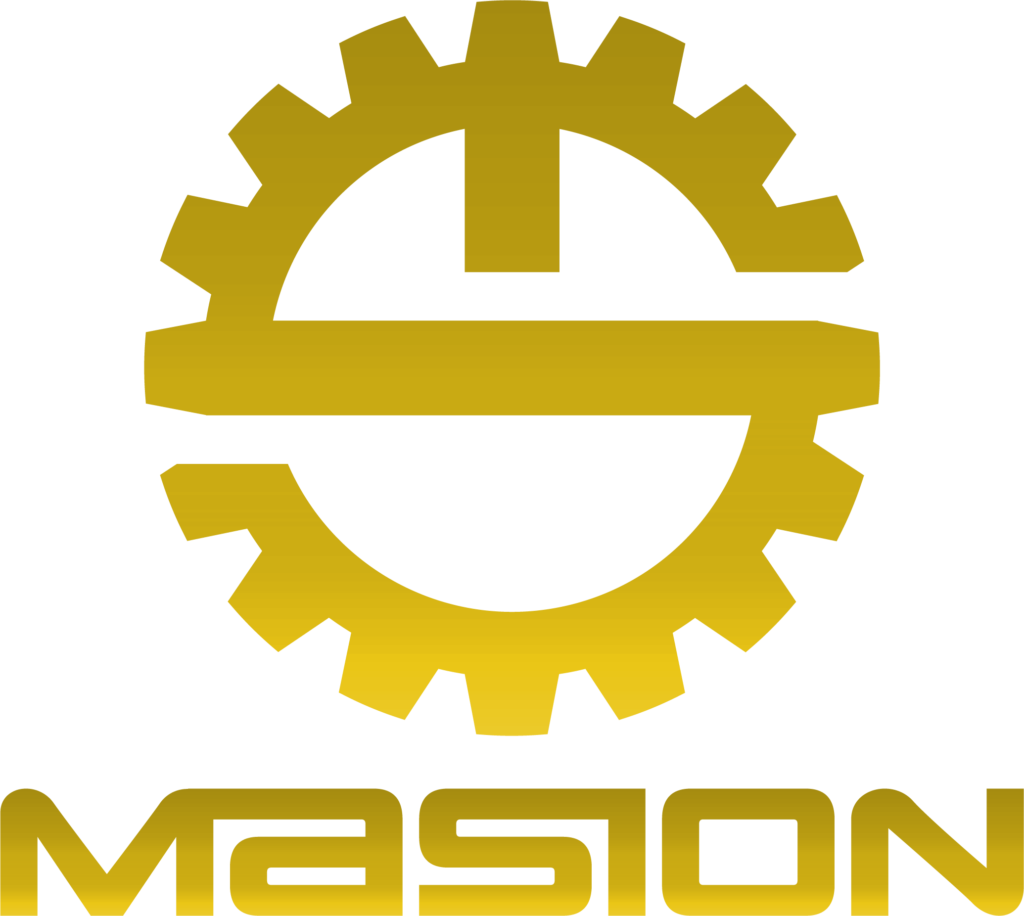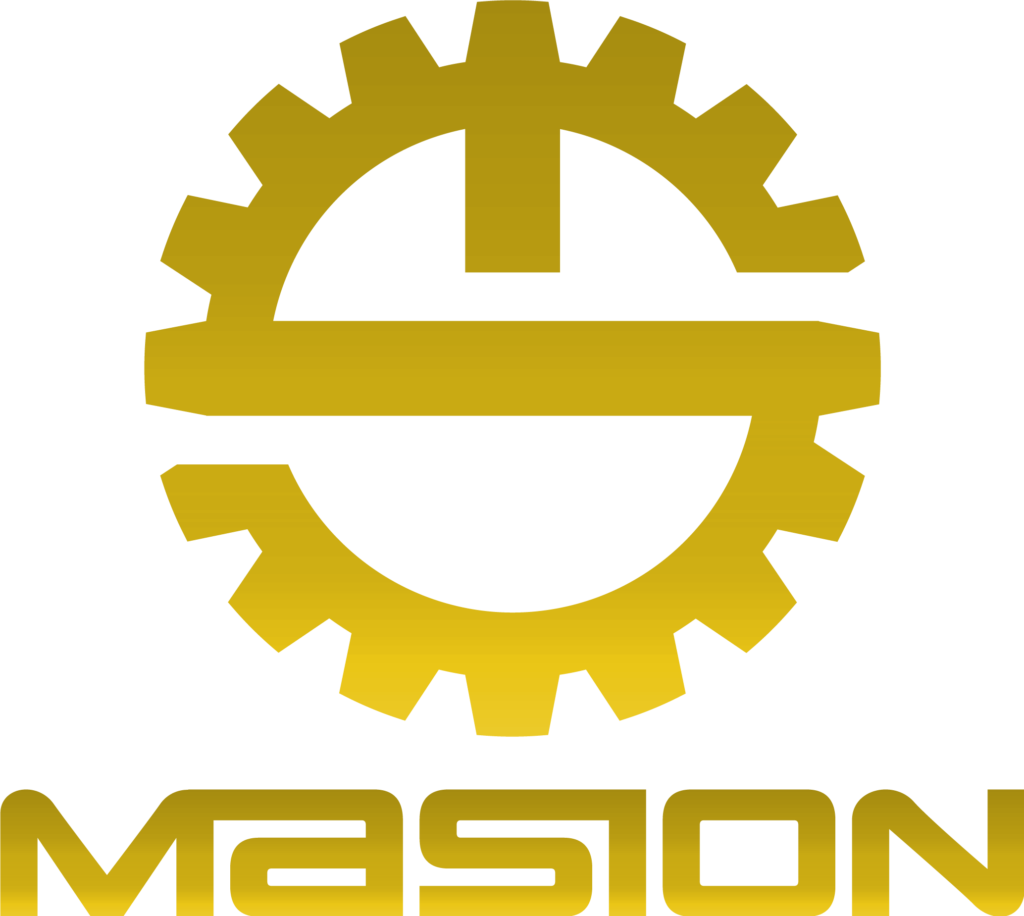5 Axis CNC WHEEL
5 Axis CNC WHEEL
Custom CNC wheel rimmanufacturer in China.
MOQ Starts from 4pcs.
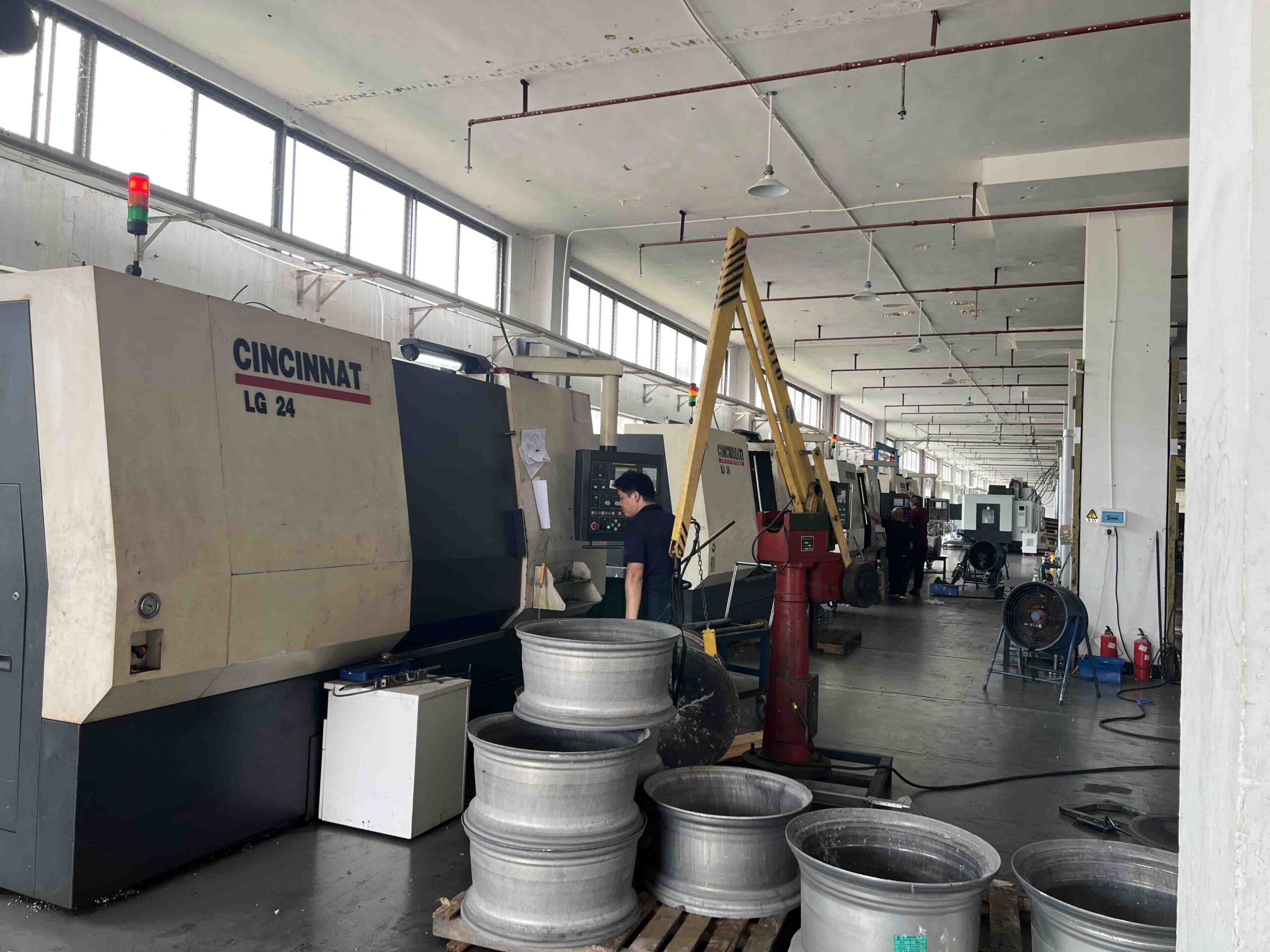
Masion Capability
High Capacity, Proper Price
Free Samples, Low MOQ
Certified Factory, Guaranteed Quality
High precision, thick gold
Our Products

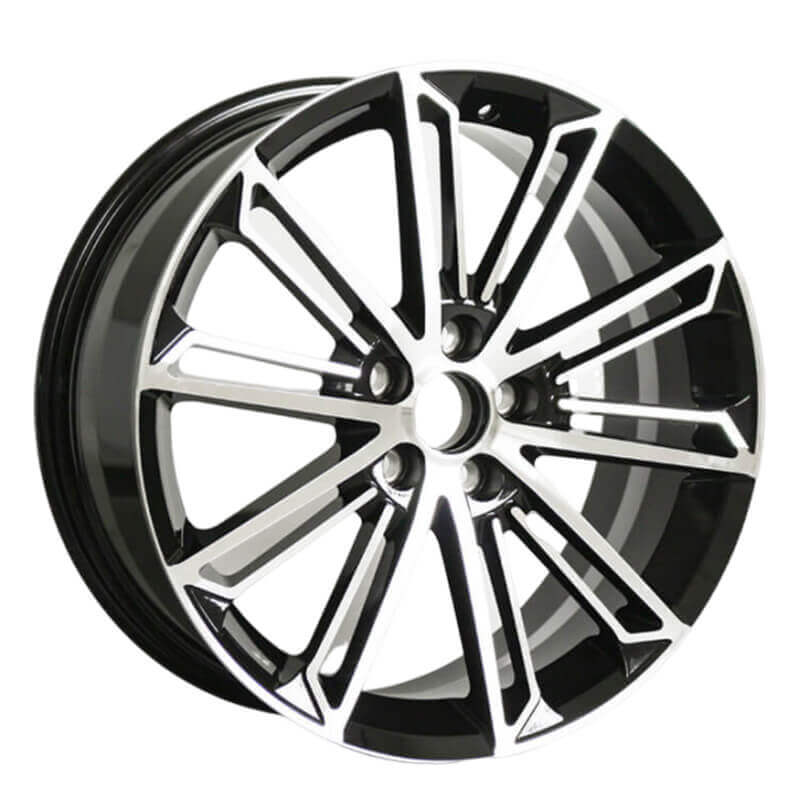
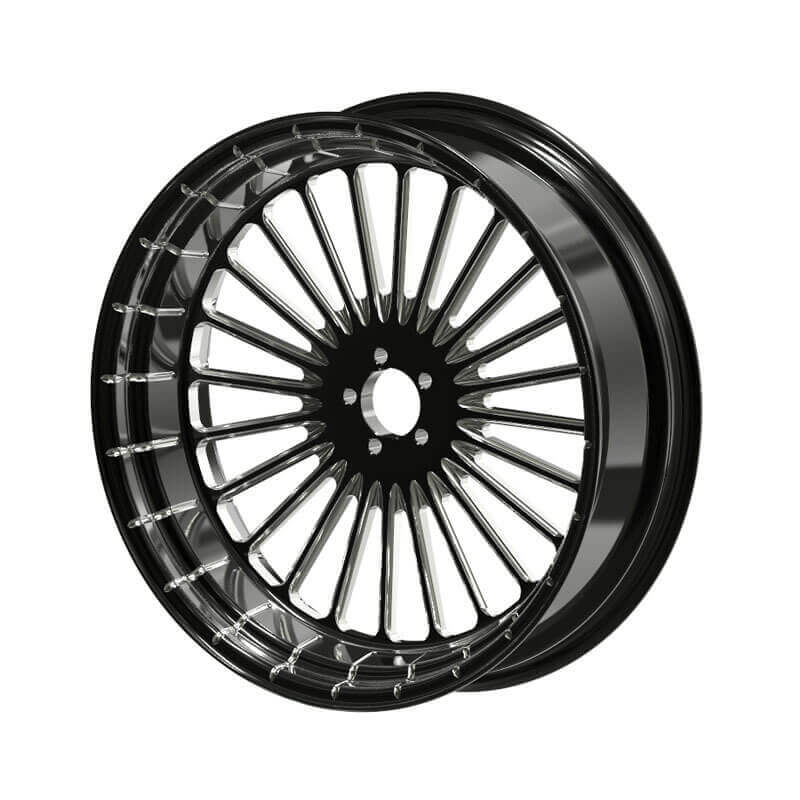
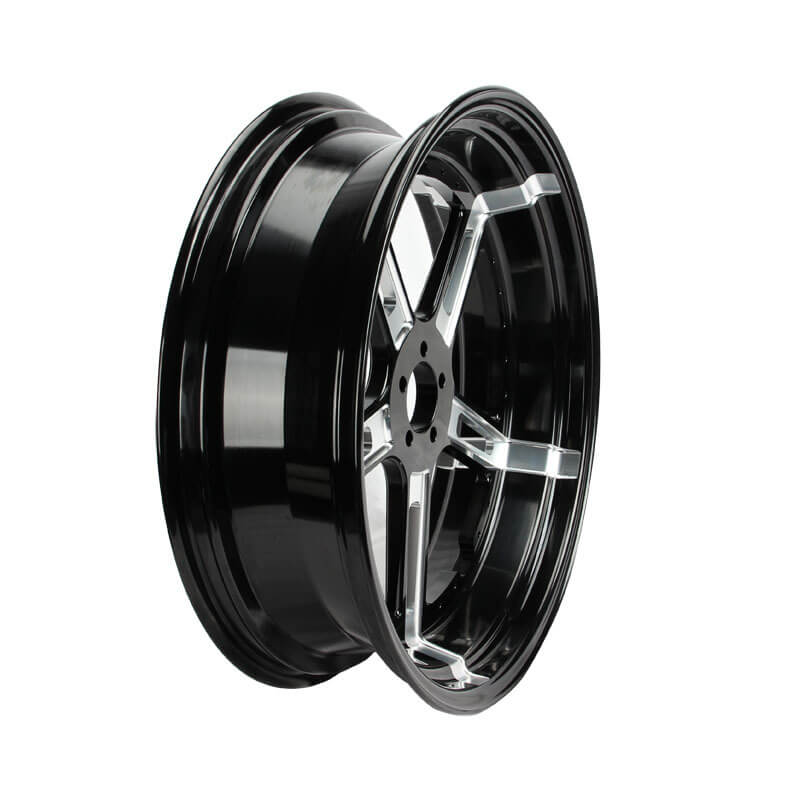
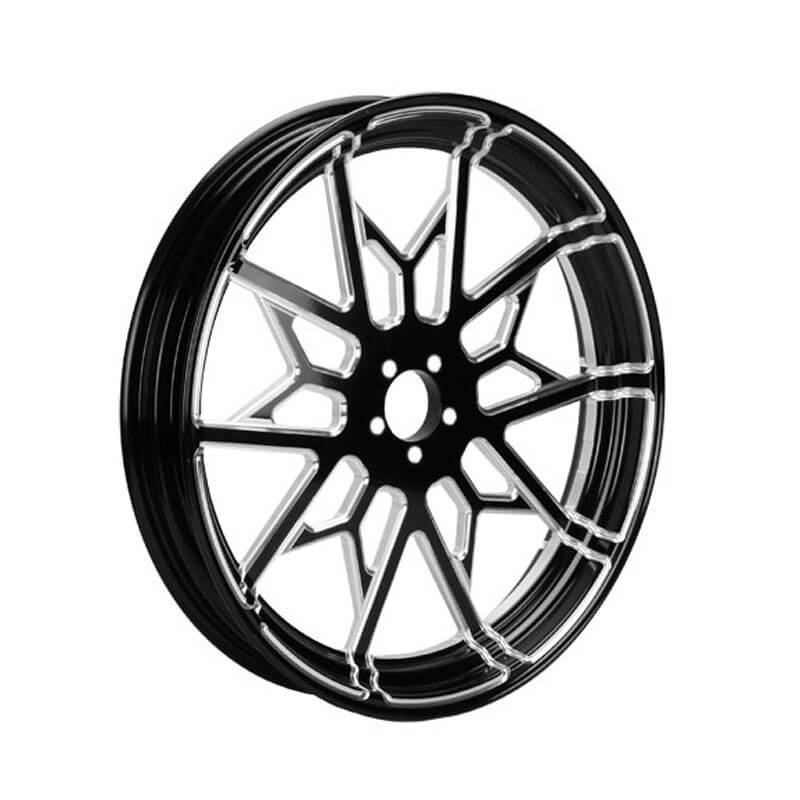

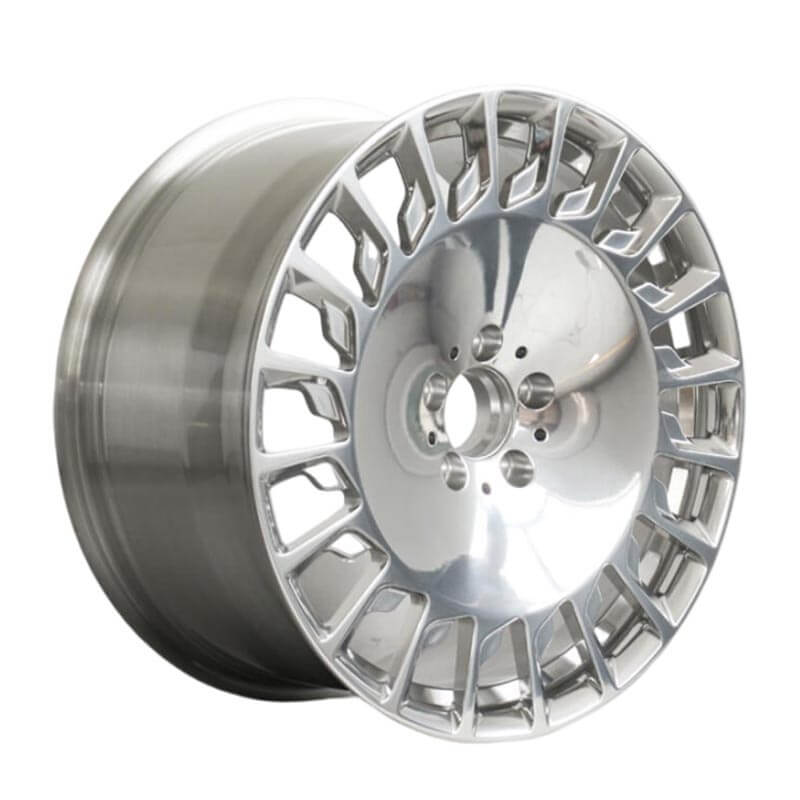
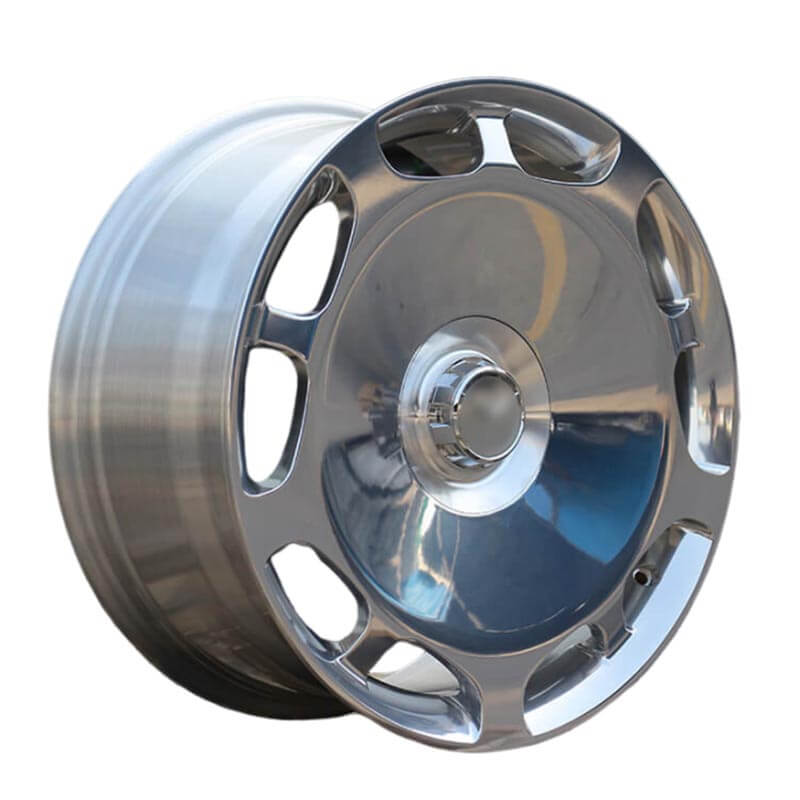
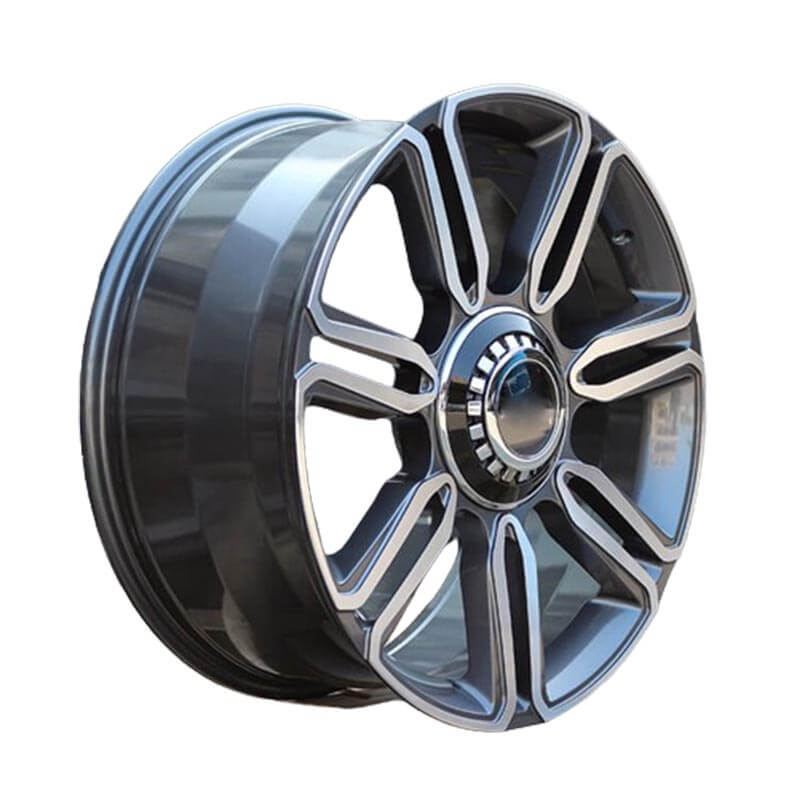
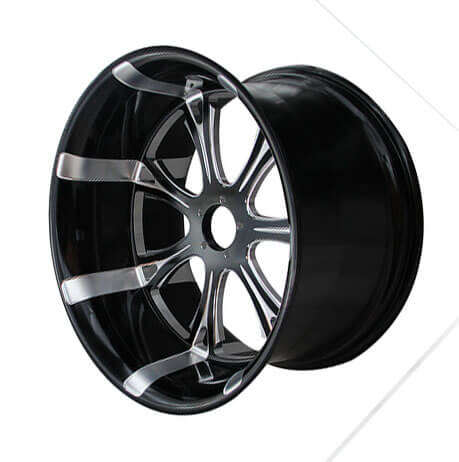
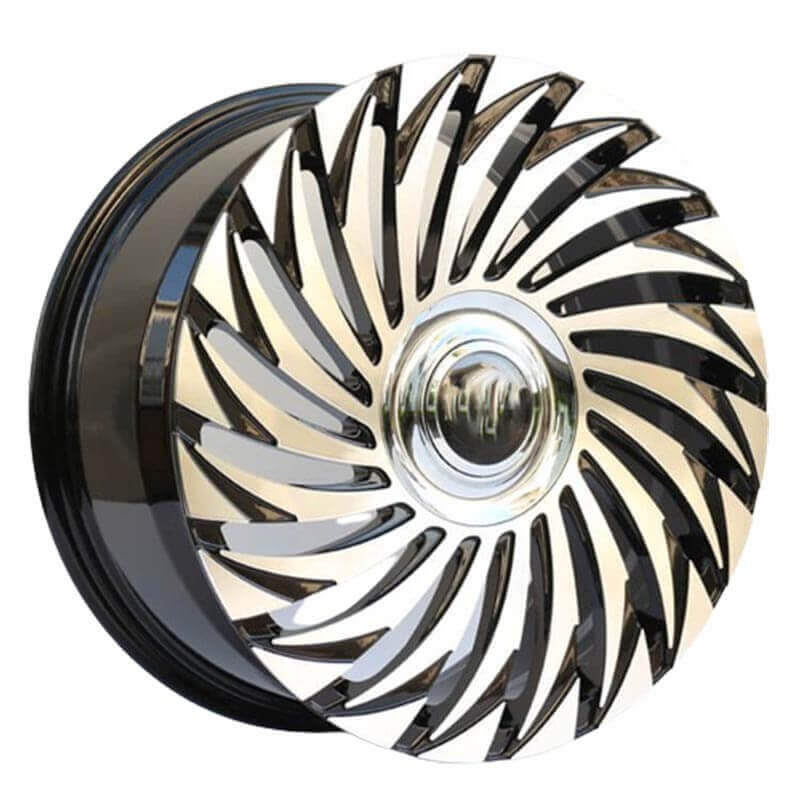
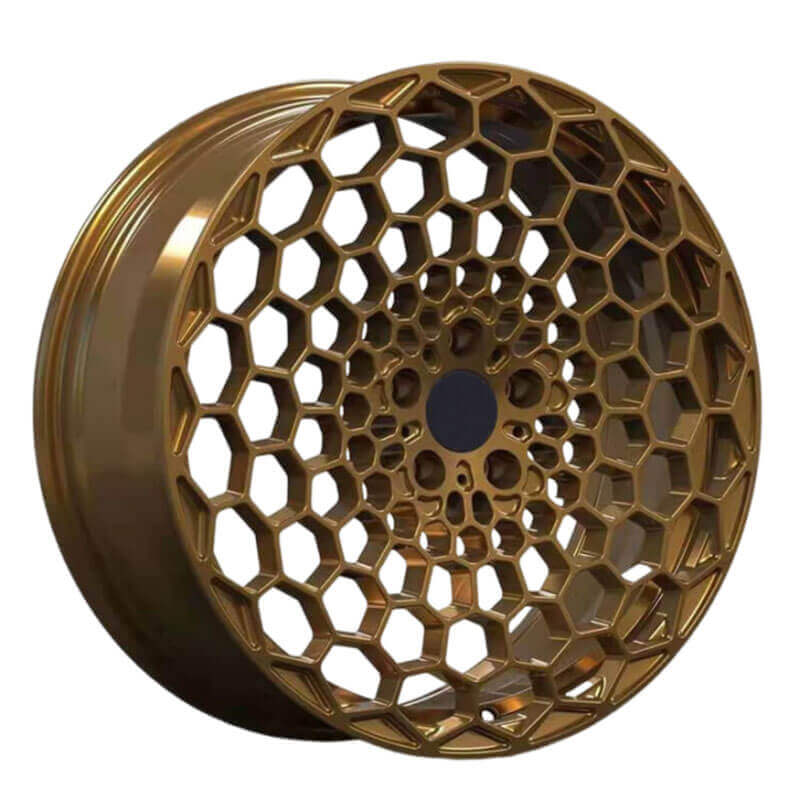
What Sets Us Apart

Strong Experience
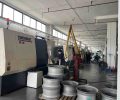
Advanced Machine
30 sets precision CNC 3,4,5 axis machine, with mature and stable manufacturing processes.
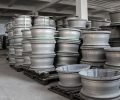
Surprised Price
Stockpiling a large amount of conventional materials and having a mature production process can reduce the overall price by 5%.

24/7 Engineering Support
Masion offers 24/7 engineering support, design services, cost reduction, quality assurance, and smooth product transitions.
Wheel Rim Manufacturing Process
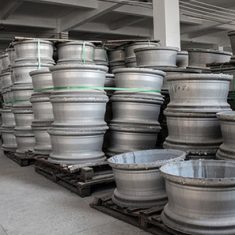
Raw Material
Forging


CNC 5 axis Machining
- Milling
- Turning
- Drilling
- Cutting
- Counter Sinking
- Boring
- Grooving
- Taper
- Turning
- Reaming
Surface Finish
Painting: Coating wheels with water-based and powder technologies for diverse, eco-friendly colors and craftsmanship after polishing.
Chrome Plating: Chrome-plated wheels, including silver, hydrochrome, and pure chrome types. Silver and hydrochrome offer affordability with a shorter lifespan, while pure chrome maintains color longer at a higher price.
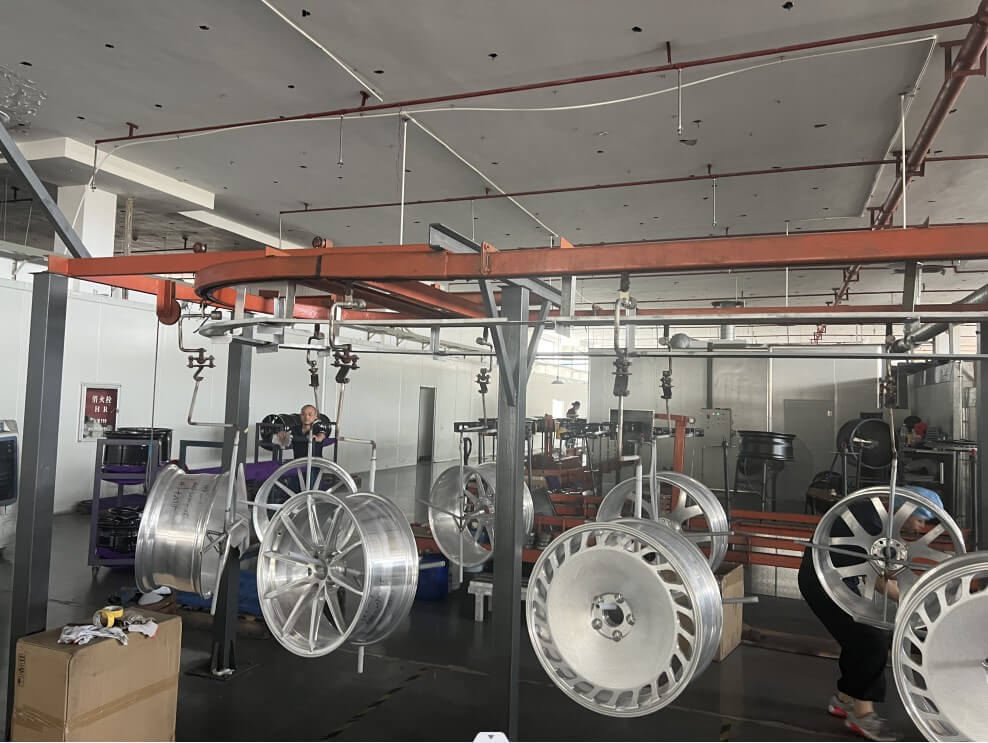
Brushed Finish: Grinding the surface for linear patterns on brushed wheels, exhibiting two color tones and a vibrant appearance.
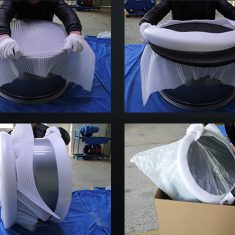
Packing
- For small-sized impellers, we individually package them with bubble wrap before placing them in cardboard boxes.
- As for large-sized impellers, we utilize wooden crate packaging, with additional isolation measures to prevent any damage to the impellers during transportation.
Quality Control (Testing)
- We conduct material inspections to ensure their correctness.
- We perform initial inspections on the first samples; production proceeds only if the dimensional inspection is passed, with adjustments made if necessary for non-compliance.

- We conduct sample inspections on the manufactured products to ensure compliance with the dimensional requirements specified in the drawings.
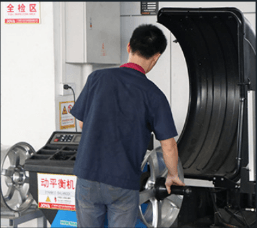
Performance Test
- Dynamic Balance Test
- True Roundness Inspection
- Impact Test
- Salt Spray Test
- Bending Test
- Fatigue Test
- Burger's test
Application Area


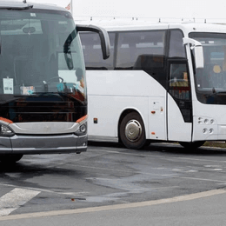

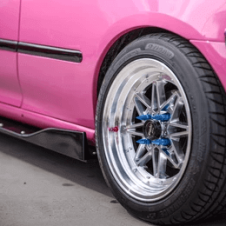

5 axis CNC Wheel Rims FAQs
Using forged wheel rims can effectively reduce vehicle wear and achieve advantages such as faster acceleration and better handling. Due to the higher strength and lighter weight of forged wheel rims, vehicles can accelerate quickly during starts and maintain better handling during everyday driving. This not only helps reduce fuel consumption and engine power usage, leading to fuel savings, but also improves overall energy efficiency with significant emission reduction effects. Furthermore, the superior performance of forged wheel rims contributes to extending the engine’s lifespan, providing reliable performance for vehicles.
We typically use 6061-T651 aluminum alloy to manufacture the wheel rim. This aluminum alloy is produced through a heat treatment and pre-stretching process, providing advantages such as lightweight, excellent corrosion resistance, high toughness, and minimal deformation after processing. 6061-T651 aluminum alloy is widely utilized in various fields, including transportation, electronics, aerospace, and defense, making it an ideal choice for the manufacturing of wheel rim due to its superior performance.
Steel wheel rim: Steel wheel rims are commonly made of steel, representing a cost-effective and widely used material. However, they have poor heat dissipation capabilities and are prone to rusting, especially in rainy and humid conditions.
Aluminum Alloy wheel rim: Aluminum alloy wheel rims are primarily composed of aluminum with the addition of metals like manganese and magnesium. Compared to steel wheel rims, they are lighter, contributing to fuel efficiency in vehicles equipped with aluminum alloy wheels.
Magnesium Alloy wheel rim: Magnesium alloy wheel rims are primarily made of magnesium with the addition of other metal materials. This material is the lightest among the options, gaining popularity among car owners. Magnesium alloy wheel rims offer good shock absorption performance, efficient heat dissipation, and corrosion resistance.
Carbon Fiber Composite Material wheel rim: Carbon fiber composite material wheel rims are made from composite materials, making them relatively expensive. However, they offer excellent noise resistance and are easily repairable even if damaged.
Automotive Parts Forging Process: This forging process may include gravity casting and low-pressure casting. Gravity forging involves a simple process where the liquid alloy is poured into the mold, naturally forming under gravity, resulting in relatively low costs. Low-pressure casting relies on low-pressure pressing of the liquid alloy into the mold. wheel rims produced using this method have relatively higher metal density, strength, and more complex shapes, ensuring a higher safety factor. It is currently a key mode for manufacturing aluminum alloy wheels with relatively high product yield and automation.
Automotive Parts Casting Process: With the assistance of high pressure, the heated alloy is pressed into the rough rim. After secondary production processing on the production line, the shapes are generally simple, and the surface of the wheel rim mostly features simple and rough lines.
Automotive Parts Spinning Process: This process has specific requirements for pressure and temperature. With the help of rotational motion and extrusion, the structure of the local positions of the wheel rim and rim is extended.
Material Selection: Choosing the right material is crucial, typically using aluminum alloy or steel. The material should possess sufficient strength, hardness, and corrosion resistance.
Process Specifications: Adhering to automotive manufacturing and safety standards to ensure the rim complies with the required performance and safety requirements.
Design and Dimensions: The design and dimensions of the rim should meet the requirements of the automobile manufacturer. Ensure the geometric shape, hole positions, bolt patterns, etc., are correct.
Surface Quality: The rim’s surface should be smooth, free from cracks or defects. Surface treatments such as polishing, sandblasting, or coating should meet appearance and performance requirements.
rim Holes: Ensure the rim holes (used for mounting tire bolts) are accurate, uniform, and have the correct diameter and thread.
Dynamic Balancing: rims must undergo dynamic balancing during the manufacturing process to ensure even weight distribution, preventing vibration and instability during rotation.
Heat Treatment: Some rims may require heat treatment to enhance strength and durability. Ensure the heat treatment process complies with standards.
Inspection and Quality Control: Conduct rigorous inspections and quality control, including dimension measurements, material testing, and surface quality checks.
Threads and Nuts: If there are threads on the rim, ensure they match with the nuts and have the correct torque specifications.
Regular Maintenance: Perform regular maintenance and inspections on the rims to ensure their safety and performance during use.
CNC machining of automotive rims requires high precision and quality control to ensure their reliability and safety on vehicles. Adhering to relevant standards and best practices is crucial in this process.
The forging and forming process of wheel rim mainly includes the following steps: winding, welding, flaring, rolling, expanding finishing, other processing, and pressing welding. In the winding stage, the steel plate is rolled into a cylinder by an automatic reclaiming machine and a winding machine. In the welding stage, the opening position is welded by flash butt welding technology, and the closed cylindrical object is obtained by flattening process and welding treatment. In the flaring stage, both ends of the rim are expanded into a flared shape by the flaring machine to ensure the reliability of workpiece positioning in rolling forming. In the rolling stage, the rim is rolled 3 times through the rolling mold to ensure that the coaxiality, cylindricity and size meet the requirements. Expansion finishing process through cold rolling deburring and circular correction, the rim diameter meets the design requirements. Finally, the press fit welding presses the spoke into the rim, and then the rim and spoke welding machine is used to weld the two parts into a single structure. The whole forging and forming process has the characteristics of high efficiency, energy saving and good quality. English translation.
The difference between monoblock and multi-piece (typically referred to as “two-piece”) wheels rim lies in their structure and performance characteristics:
- Structural Difference:
Monoblock Wheel rim: Constructed from a single block of aluminum, presenting a simple and aesthetically pleasing flat profile on the side.
Multi-Piece Wheel rim: Comprises two parts – the outer circular component (wheel face) and the inner spoke component. This design enhances rigidity under the same weight.
- Performance Difference:
Weight:
Monoblock Wheel rim: Generally lighter compared to multi-piece wheels.
Multi-Piece Wheel rim: Tends to have a larger overall weight due to its more complex construction.
Strength:
Monoblock Wheel rim: Simpler structure, providing good strength but with limitations.
Multi-Piece Wheel rim: More complex design with interlocking components, resulting in higher weight-bearing capacity and better resistance to pressure.
Application Range:
Monoblock Wheel rim: Commonly used in racing vehicles, sports cars, and high-performance applications due to its lightweight and excellent center of gravity balance.
Multi-Piece Wheel rim: Well-suited for high-end luxury sedans, SUVs, and heavy-duty vehicles, offering superior load-bearing capacity.
- Pros and Cons:
Monoblock Wheel rim:
Pros: Lightweight, aesthetically pleasing, enhances vehicle handling and overall performance.
Cons: Limited load-bearing capacity compared to multi-piece wheels.
Multi-Piece Wheel rim:
Pros: Sturdier construction, higher load-bearing capacity, and better wear resistance.
Cons: Higher cost, greater weight, potential impact on vehicle’s center of gravity balance.
In summary, the choice between monoblock and multi-piece wheels should be based on the intended use of the vehicle, its structural characteristics, and personal preferences. Considerations such as aesthetics, weight, and structural integrity are crucial when selecting wheels.
- Considerations for Wheel rim Size:
Handling Performance: Pay attention to the impact of wheel size on handling performance. Choose the appropriate size based on vehicle weight, driving environment, and road conditions.
Braking Performance: Consider the influence of wheels on braking performance. Larger wheels may pose challenges in braking, so select a size that suits driving conditions.
Engine Output: Take into account the vehicle’s engine output when opting for larger wheels to ensure sufficient power. Comprehensive research and professional consultation are key factors in choosing the right wheels.
- Factors for Optimal Wheel rim Size:
Vehicle Type: Consider the type of vehicle, driving scenarios, and aesthetic preferences when selecting wheel size.
Driving Environment: Different wheel sizes have an impact on vehicle performance and fuel efficiency. Choose a size that enhances the driving experience based on the driving environment.
Understanding Size Standards: Familiarize yourself with wheel size standards and consider the requirements of the specific vehicle model. Aesthetic preferences also play a role, making it crucial to choose a wheel size that suits individual needs.
III. Material and Performance of wheel rims:
Alloy Wheels: Lightweight with high strength, suitable for high-end models. However, they may have lower impact resistance.
Steel Wheels: Strong load-bearing capacity, suitable for road and off-road vehicles. However, they tend to be heavier.
Carbon Fiber Wheels: Lightweight with excellent strength, enhancing fuel efficiency and handling. However, manufacturing costs are high.
Conclusion:
Choose wheels based on practical needs, driving habits, and a comprehensive consideration of cost, safety, and performance.
Strive for the best cost-performance ratio to ensure the vehicle’s safety, comfort, and aesthetics. Conduct thorough market research and seek professional advice during the selection process.
Free Sample
Explore Other Products

Passivation of Aluminum and Aluminum Alloys
For aluminum and aluminum alloy workpieces, whether obtained through chemical oxidation or anodization, the resulting oxide film is porous, prone to contamination, and has poor corrosion resistance. Even after coloration

CNC Machine Shop
Masion is a CNC machine shop to manufacture different CNC machining parts you could learn CNC machine shop here clearly.
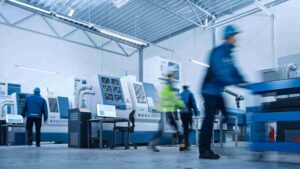
Considerations for CNC machining production
Explore the intricacies of CNC machining production with a focus on hole machining and boring processes. Delve into considerations, safety measures, and practical tips for effective CNC operations. This guide
